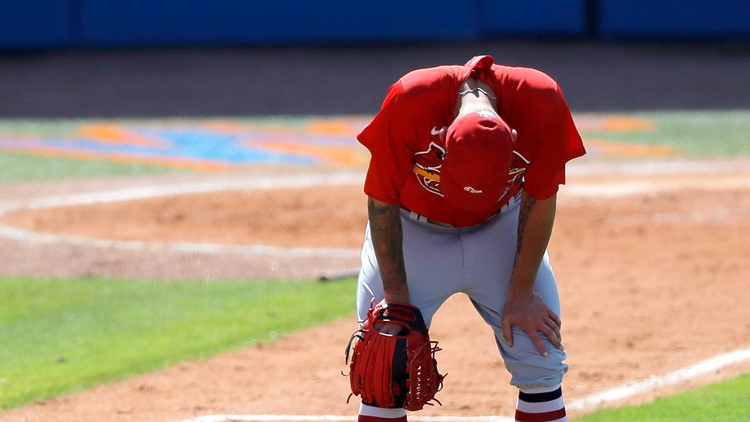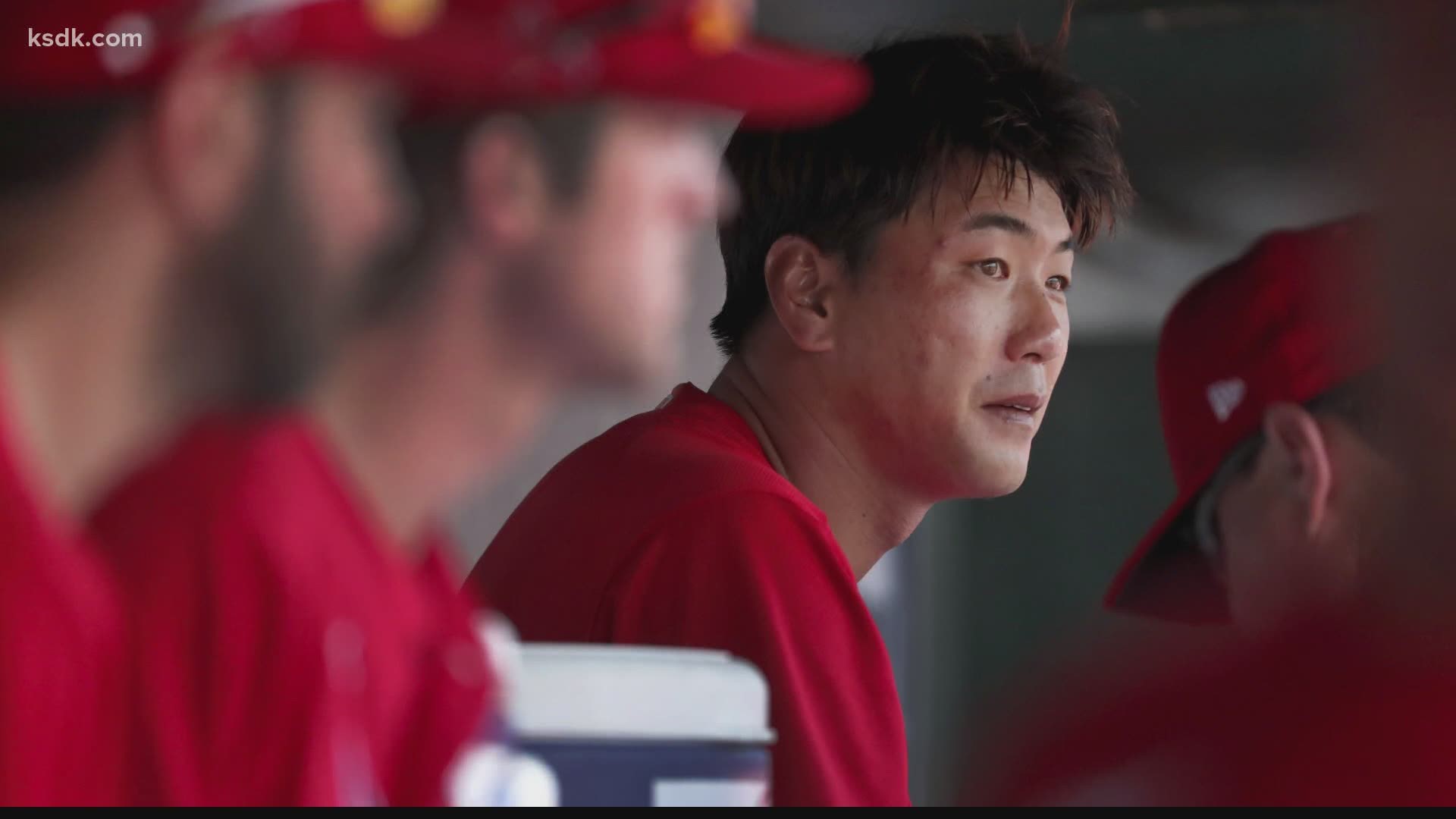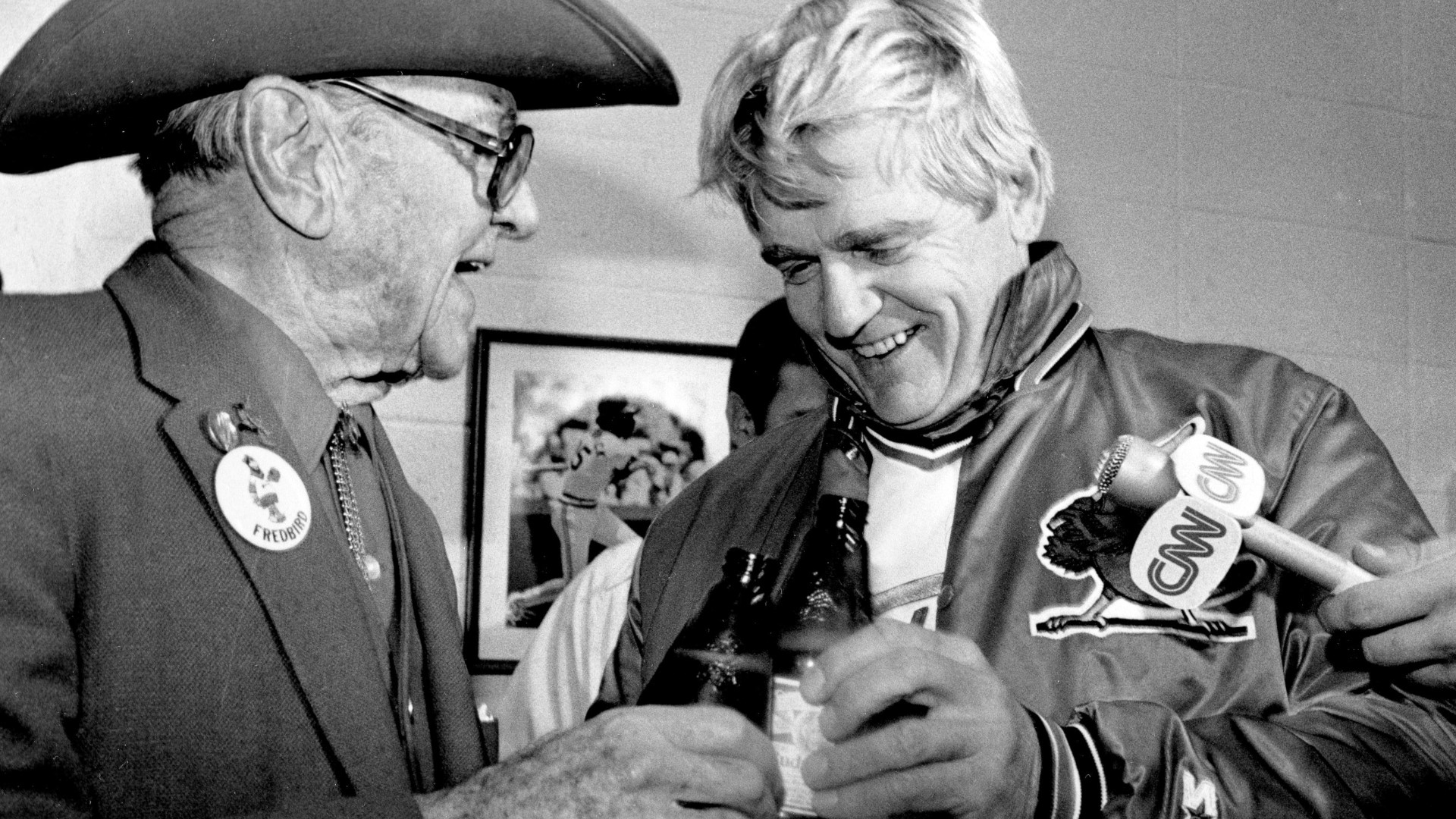ST. LOUIS — Brett Cecil and the St. Louis Cardinals entered their working relationship with big expectations.
The veteran left-handed reliever was given a four year, $30 million dollar contract by John Mozeliak and the front office. A heavy price to pay, but not one that was foolish at the time. Only Aroldis Chapman had a higher desire reading on the free agent radar that offseason, so Cecil was a top commodity for good reason.
Here's the sum of his work from his last four years with the Toronto Blue Jays:
2.73 FIP, 11.5 SO/9, 1.16 WHIP, 16 HR in 205 IP, 60 games pitched per season on average.
Keep in mind that Toronto is a hitter's ballpark, located in the hub of offensive firepower in the American League East Division. Cecil managed to tame the bats of the Yankees, Red Sox, and Orioles. When you average 12 strikeouts per nine innings pitched, you are a top flight reliever.
It just didn't work out. Wednesday, the team announced it had released Cecil in a series of moves that also included Brad Miller going to the Injured List.
Cecil was a victim of poor performance and bad timing. With a 60-game season making every inning and out highly valuable, there was no room for error. Essentially, there was no room for Cecil.
It didn't look too bad after his first season. Cecil pitched in 73 games during the 2017 season, finishing with a commendable 3.88 ERA/3.26 FIP and 66 strikeouts. The strikeouts-per nine were down, but overall the season was a success. It didn't look as bad as the headlights led the driver to believe. Many fans were unhappy, but that happens when the Cubs slugger, Kyle Schwarber, hits a ball halfway to Chicago in one of your first outings at Busch Stadium.
It quickly went downhill from there. Cecil appeared in 40 games in the 2018 season, and was ripped for a 6.28 FIP. He averaged more walks than strikeouts per nine, and couldn't be trusted or counted on most nights to get a 1-2-3 inning. When he entered the game, you traded the beer for Pepto on the couch.
A series of injuries kept Cecil from pitching last season, including a rough bout with carpal tunnel syndrome. This year, he was injured in spring training and couldn't top 80 miles per hour on the gun when summer camp opened up this month. It was a project that needed to be shelved. Cecil had gone from a guy who could silence the biggest bats in the league to someone dropping down to sidearm in order to salvage his career.
When I think of Cecil, Allen Craig comes to mind. Here was a guy making a waste of the AL East and then a move to the National League ruins him. The injuries played a big part. Carpal tunnel syndrome can impact velocity and long term endurance. Chris Carpenter had to call it a career when a nerve injury sidelined him indefinitely. Cecil was running out of time before 2020 opened its sinister round of madness.
Now, it's done. I don't fault the Cardinals and Mozeliak for giving Cecil the contract. He was one of the top rated free agent relievers on the market. He came here and the performance just didn't happen. He was decent early on, but quickly turned bad. When he missed all of last season with an injury card that seemed to shape shift a bit, the writing on the wall was there. There was always an odd feel to the Cecil Injured List stay.
Sometimes, contracts don't work out. Bill DeWitt Jr. often says he doesn't sign a guy for what he has already done, but what he hopes the player can do in the future. There was hope that Cecil could be a jack of all trades with the Cardinals; in the end, he was merely the joker card that you leave out of the deck before dealing.
Back in 2018, before the season began, I asked Cecil what were his biggest struggles in coming over to the Cardinals in 2017. He mentioned that adjusting to the National League was more difficult than he had thought it would be. When you think about it, the two leagues are composed so differently that a pitcher can fall in between the cracks on occasion. Cecil was one of those unfortunate cases where a pitcher just couldn't adjust to the new surroundings.
This doesn't set the team back at all. It was finding weak links and eliminating them before this 60-game sprint begins. The Cardinals already have too many "ifs" on their team; they couldn't afford to have Cecil be one of them again.
Baseball returns in two days, folks. Thanks for reading.
More Cardinals Coverage
RELATED: Cardinals release broadcast schedule




